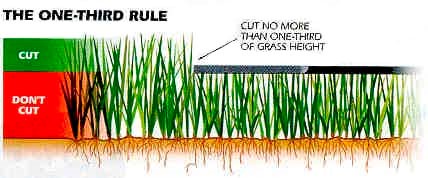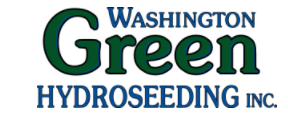Follow Us x
FAQ
What is HydroSeeding?
HydroSeeding is a planting process in which a slurry containing seed, mulch, fertilizer and a tackifier (bonding agent) is sprayed onto the ground. The slurry is sprayed over prepared ground in a uniform layer. Hydroseeding offers many advantages to the traditional process of broadcasting or sowing dry seed. It promotes quick germination and inhibits soil erosion. It is also a very effective alternative to sod that offers a significant cost savings as well as many other benefits.
How Does HydroSeeding Work?
Virtually any grass or erosion control seed that can be planted by seed can be hydro seeded. This includes any sun or shade lawn seed, athletic field mixes, pasture mixes, native grasses, wildflowers, roadside mixes and erosion control mixes. The nutrient rich slurry helps promote fast germination. The hydro seeding mulch helps keep the soil moist to enable the seed to germinate quickly and unlike straw or hay contains no weed seed. The tackifier in the mix acts like a glue to hold the mulch in place and to help prevent washout in the case of heavy rains.
What are the Advantages Of HydroSeeding Over Broadcast (Dry) Seeding?
- Quicker Germination
- Better moisture retention
- Better seed to soil contact
- Hydro seeding mulch contains no weed seed unlike straw or hay
- Better results at a similar cost
- Areas such as hillsides and narrow areas that are difficult or impossible to dry seed can be done easily
- No straw or netting to remove
- One step and very uniform application
- Holds soil in place
What are the Advantages Of HydroSeeding Over Sod?
Sod provides instant gratification but there are advantages to hydro seeding over sod. As someone once commented, hydro seeding is a lot like sod but you eliminate the middle man.
The advantages of hydro seeding over sod are:
- You can have a sod quality lawn in a few weeks for less than 1/3 the cost of sod.
- Hydro seeding grows the lawn on your soil and is not a different soil that is transplanted
- The problem of sod not "taking" is eliminated.
- With sod the roots are cut very short and the sod goes through some shock during shipment and installation
How much does HydroSeeding cost?
Hydroseeding prices vary based on the location of the jobsite, type of seed, fertilizer and other additives and overall area to be seeded. Call for your free estimate.
What type of preparation is needed for HydroSeeding?
The amount of preparation can vary depending on the intended use of the area. The health and beauty of your new lawn will be directly related to the effort applied during preparation. Click Here for more information
What type of grass seed is used in HydroSeeding?
We are able to offer custom seed mixes based on the location of the job, desired use, climate conditions and whether or not it will be irrigated. The typical lawn mix for the Pacific Northwest consists of Kentucky Bluegrass and Perennial Ryegrass.
Why is the green color gone from my HydroSeeded lawn?
The green dye that was present during the initial application will fade and disappear in as few as 2 days in some cases and in other instances it may last weeks. The colorant has no bearing on the quality of the hydroseed or the impression that the hydroseeded lawn has washed away.
How much should I water my HydroSeeded lawn?
Watering is the most important factor in establishing a new lawn. Newly seeded lawns that are watered regularly germinate more quickly, establish more densely, and crowd out potential weeds more effectively than non-watered lawns. Without frequent watering, the new seed will not germinate as quickly or as uniformly, allowing weeds and/or old grasses to potentially re-establish themselves in the lawn.
Frequency: Watering should be performed two to six times daily depending on how quickly the area dries. The main function of the mulch used in the hydroseeding is to protect the seed and keep it moist while germination and growth take place. It is essential to make sure that your watering schedule does not allow the mulch to dry out completely. Use of an automated sprinkler system is highly recommended. Please wait 24 hours after hydroseeding before you begin watering. This will allow the tackifier in the mulch to set and protect the mulch layer from erosion. Use the next couple days to fine-tune your timer, setting the cycles for a duration that will keep the area moist but not saturated.
Amount: A germinating seed does not have roots yet; therefore, there is no need to water heavily at first. If the water puddles and does not drain in a short time, the seed can be damaged and fungus can grow. The seed needs cycles of water and air to germinate and grow properly. Check the mulch before the sprinklers come on to ensure that it is still moist, and adjust duration if necessary. There are several factors that determine how quickly an area dries, including soil density and composition, slope, amount of direct sunlight, temperature, and humidity. When the mulch dries, it will usually dry from the top down, so the appearance can be deceiving. If needed, you can peel back a couple inches of mulch in an area of question, and see if it is moist under the surface. Keep it moist, but not saturated.
Timing: Schedule the sprinklers' first cycle to begin early in the morning. Set the other cycles at regular intervals with the last cycle ending well before sundown. Depending on the weather and the time of year, you may need to supplement your sprinklers with hand watering to keep the area from drying out. You may also need to adjust them occasionally as the weather changes during the first month as this is the critical period of germination and initial growth. Monitor this carefully as the health of your lawn is at stake. After the first three or four weeks, you can begin to lower the frequency and increase the duration. After a couple months when the lawn is well established, water it thoroughly one or two times a day to encourage deep root growth.
New Lawn Care PDF
When should I fertilize my HydroSeeded lawn?
This will often vary depending on the type of grass seed used, condition of the soil and recommended fertilizer types for your climate. A common practice is to apply a nitrogen rich fertilizer soon after the first mowing has been done. Weeks 4-6 are common fertilizing times. When in doubt, an Expert should be consulted as improper fertilization could cause severe damage to your lawn.
Can I walk on the HydroSeed once it is applied?
Only as much as is absolutely necessary. Heavy traffic on a newly seeded lawn can permanently damage the new grass. Walking on a freshly hydroseeded lawn can leave depressions in the lawn and in some cases cause bare spots to form.
How soon will I have grass?
Grass grows between the ground temperatures of about 50 and 90 degrees anything warmer or cooler and the grass becomes dormant. With proper irrigation the seeds should germinate in about 10-14 days, which means that the seed cracks open and begins to put down a root. After a root is established it will then begin to put up a blade, which should be visible at around 14 to 21 days. At around 4 weeks the grass will look a little thin but don't worry, as the plant develops and gets some fertilizer it will thicken considerably. With good growing conditions, you should be ready for the first mow at around 4-6 weeks.
Can I apply weed-kill to my HydroSeeded lawn?
Strong chemicals such as Pesticides or weed-killers should be avoided until your lawn is well established. A common practice is to wait at least 3 months before any pesticides are used on your new lawn as some chemicals may hinder your lawn from growing to its full potential. Please contact your local lawn care professional for recommendations.
When should I first mow my HydroSeeded lawn?
Mow your new lawn when any grasses reach approximately 3". Raising mower heights during hot weather will preserve moisture and cause less visual mowing damage. Keep your blade sharp to minimize leaf stress. Always follow the "One-Third Rule".
Do I need any special equipment to mow my HydroSeeded lawn?
No. The most important item you can have when mowing your new lawn is a very sharp mower blade. Try to avoid sharp turns when mowing a fresh lawn so as to avoid tearing the grass out with your tires.
Is HydroSeeding guaranteed?
The workmanship and materials used to complete your new hydroseeded lawn are fully guaranteed. Please understand that how well your lawn does depends on the care it receives after application. Rest assured that if you follow the instructions for the care of your new lawn it will turn out healthy and beautiful. The warranty does not cover areas that suffer due to lack of water, over watering, poor soil conditions or displacement of the Hydroseed due to any manual disturbance, erosion, high winds and other natural causes.
Is HydroSeeding better than sod?
Installing sod will give you a lawn in as little as one day. Hydroseeding may take a few weeks to see your lawn fully develop. However hydroseeding is also considerably less expensive than sod. As to which lawn looks better, aftercare and attention to your investment will ultimately determine what your results are with either choice.
What is the best time of year to have my lawn HydroSeeded?
This will depend greatly on your climate, traditionally the Spring and Fall months are the most conducive to growing any type of vegetation. The normal period for the Pacific Northwest is from March 15th through October 15th.
I see green stains on my foundation and my walkway after my yard was HydroSeeded. Will it go away?
Absolutely, the green dye that may have splashed onto your foundation or walkways will usually fade away within a few days and can easily be hosed off with a garden hose.
